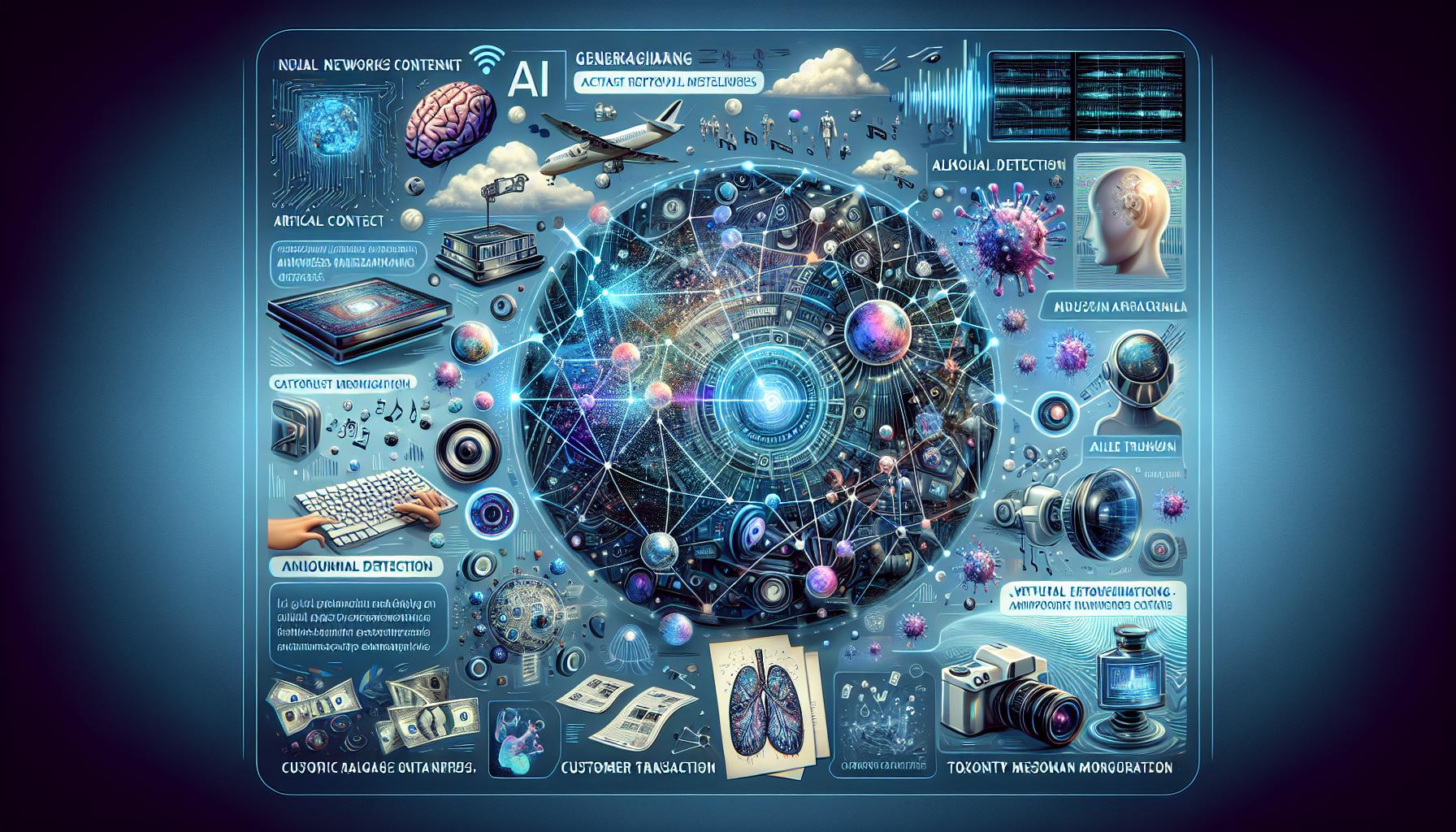Exploring Generative AI Services for Innovative Solutions: Ethical, Privacy, and Quality Considerations

Introduction
Generative A.I. has significantly impacted the way we communicate, work, and innovate. This technology, which includes applications like ChatGPT with a user base of 100 million, has become ubiquitous in various fields such as business, healthcare, and entertainment. Generative A.I. encompasses a suite of technologies that can create new content—including text, images, videos, and audio—by learning patterns from training data. The arrival of multimodal generative A.I. models has further broadened its capabilities, allowing it to handle diverse data prompts and generate various types of output.
How Generative A.I. Works
Generative A.I. operates through neural networks that identify patterns in large sets of data and then use those patterns to produce new, similar content. Several factors influence the quality of output, including the quality of the training data, the architecture of the model, the methodologies used in training, and the prompts provided by users. A comprehensive and diverse dataset enhances the AI's ability to generate high-quality content, whereas flawed data may lead to suboptimal results. Training generative A.I. involves adjusting internal parameters and shaping the model's architecture to improve performance.
Key Applications of Generative AI
Generative A.I. finds applications in a wide range of areas, demonstrating versatility and innovation:
- Image Generation: Quickly produces and manipulates high-quality images.
- Text Generation: Capable of creating various text formats, including articles in different styles.
- Music Composition: Assists in generating new musical ideas and compositions.
- Style Transfer: Applies artistic styles to content, such as images or videos.
- VR/AR Development: Designs virtual avatars and environments.
- Medical Imaging: Analyzes and reports on medical images for better diagnosis and treatment.
- Content Recommendation: Personalizes recommendations for e-commerce and entertainment platforms.
- Language Translation: Translates text efficiently between multiple languages.
- Product Design: Allows for the generation of innovative design concepts.
- Anomaly Detection: Identifies defects and unusual patterns in various industries.
- Customer Experience Management: Utilizes chatbots for effective customer interaction.
- Healthcare: Creates personalized treatment plans and drug recommendations based on patient data.
Benefits of Generative AI
The benefits of generative A.I. are vast, making it a transformative technology with the potential to revolutionize numerous fields:
- Efficiency and Scalability: Streamlines the process of creating content, making it quicker and more scalable.
- Personalized Content: Tailors content to individual user preferences, enhancing user experience.
- Data Augmentation: Generates synthetic training data, which can improve the performance of other A.I. models.
- Innovation in Design and Art: Encourages the development of new creative projects and artistic endeavors.
Ethical Concerns of Generative AI
While generative A.I. offers immense potential, it also brings forth a number of ethical concerns that need to be addressed:
- Bias and Fairness: If the training data contains biases, the A.I. is likely to replicate and amplify those biases in its outputs. This can lead to unfair treatment or representation of certain groups.
- Misuse of AI-Generated Content: The ability to create realistic fake content, such as deepfakes, can be misused for malicious purposes, leading to misinformation and social harm.
- Intellectual Property: The generation of content that closely mimics copyrighted material raises questions about intellectual property rights and ownership.
- Lack of Transparency: AI-generated content can sometimes be indistinguishable from human-generated content, making it difficult to assess the origins and reasons for certain outputs.
Privacy Concerns with Personalized Content
Generative AI's ability to produce personalized content comes with its own set of privacy concerns. By collecting and analyzing user data to tailor content, there is a risk of intruding on user privacy and potentially exposing sensitive information. The storage and management of large datasets containing personal information also pose security risks. Ensuring robust data protection protocols and transparency in data usage is vital to maintaining user trust.
Improving Training Data Quality and Robustness
To enhance the quality and robustness of training data for generative A.I. models, several strategies can be employed:
- Data Collection: Collecting diverse and representative datasets is crucial. Ensuring that the data comes from reliable sources and covers a wide range of scenarios can improve the model's ability to generalize.
- Data Annotation: Properly annotated datasets can significantly improve the model's understanding and generation capabilities. This includes labeling data accurately and correcting any errors.
- Bias Mitigation: Implementing techniques to identify and mitigate biases in the training data can lead to fairer and more reliable outputs. This may involve balancing the dataset to ensure equal representation of different groups.
- Regular Updates: Continuously updating and refining the training data helps the model stay current and improve over time. This involves incorporating new data and removing outdated or irrelevant information.
- Quality Assurance: Implementing rigorous quality checks during the data preparation phase ensures that only high-quality data is used for training, reducing the risk of subpar outputs.
Macgence's Generative A.I. Services
Macgence is at the forefront of providing tailored generative A.I. services, offering a range of solutions to meet specific industry needs. These include:
- Fine-Tuning Language Models: Enhancing the accuracy of language models through curated data collection and expert tuning.
- Domain-Specific Text Generation: Creating industry-specific content, particularly for specialized fields like legal and medical sectors.
- Toxicity Assessment: Measuring and mitigating toxic content to ensure safe and respectful AI-generated outputs.
- Prompt Optimization: Crafting and optimizing natural language prompts to improve the interaction between users and A.I. systems.
- Answer Quality Comparison: Enhancing the accuracy and reliability of model outputs through comprehensive comparisons and analysis.
- Correctness Evaluation: Ensuring the factual accuracy and realism of AI-generated content, reducing the risk of misinformation.
Conclusion
Generative A.I. represents a transformative technology that promises to drive increased creativity, efficiency, and progress across various domains. However, as with any powerful tool, it is accompanied by challenges relating to the quality of outputs, ethical considerations, and privacy concerns. Addressing these challenges effectively is essential for harnessing the full potential of generative A.I. while mitigating the associated risks. With ongoing advancements and responsible implementations, generative A.I. is poised to continue shaping the future of innovation.

 ™
™

